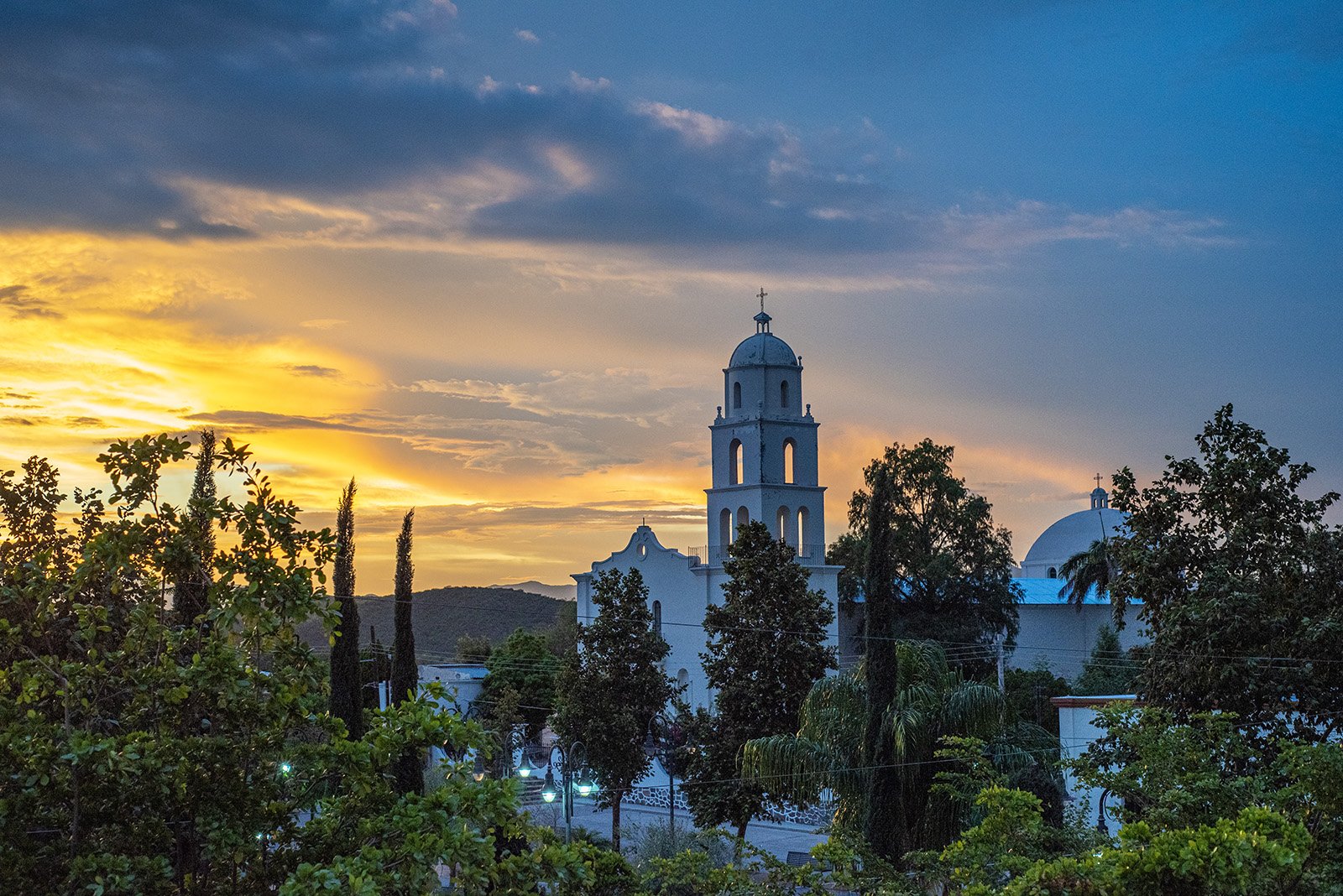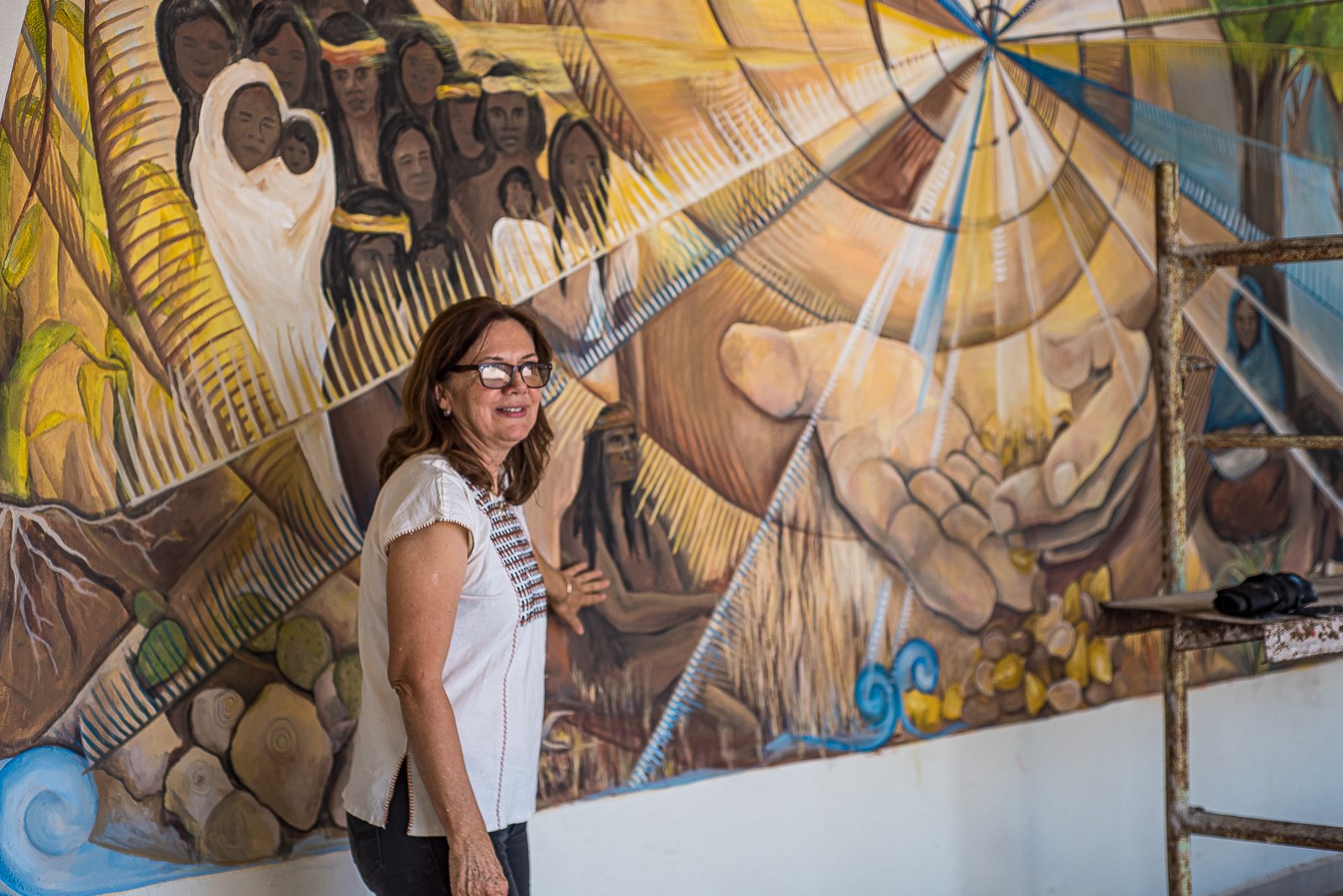
Banámichi Blueprint
Banámichi’s beauty is found in the feeling that you are a thousand miles away from home but you are only a day’s drive away from Tucson. Arriving there, you immediately understand why this community was proclaimed: “Tesoro de Sonora [Treasure of Sonora],” by the Sonoran government a few years ago.
There is something special about Banámichi and in this destination guide, we will share with you why you won’t want to miss out on visiting.
This feeling Banámichi evokes is because of its trinity of people, culture, and land.
By: Alex La Pierre / August 1, 2023
People & Culture
Members of the well-known Ballet Folklórico performing at La Posada del Río Sonora.
Local artist Beatriz Corella explains the story behind one of her muralla in Banámichi Municipal Palace.
People look you in the eye here and say good morning, good afternoon, and good evening to you with a smile. It’s a refreshing experience compared to walking down the street in any big city. It’s highly recommended to lounge at that beautiful plaza at twilight when the pueblo begins to stir with activity in step with dropping temperatures. It’s a local pastime. The people of the Río Sonora region like those who you can see conviving on the square are one of a kind. It's not an exaggeration to say they will give you the shirt off their backs if you need it or invite you as a stranger into their home for coffee.
You’ll also see the miners unmistakable in their distinctive protective fluorescent clothing and hard hats making their way home to rest their aching bodies on their beds after a long day in the nearby mine. Take time to meet people after mass at the church or the wonderful staff of the local hotels. A local baseball game is a really fun time and the most popular sport by far. It is a different pace of life here that you step into here, a timelessness to the Río Sonora region, and don’t be surprised if you are invited for a meal. And if you are not make sure you follow the unmistakable scent of mesquite coal grilled carne asada at Taquería Martín. Order an extra taco of carne asada then you’ll think you’ll eat and thank me later... The taste does not get closer to the essence of la cocina sonorense!
Land
A view of the beautiful river valley.
Nothing is more timeless than the land of Sonora. Banámichi is built on a geological terrace overlooking the Sonora River, the waterway gives the name to the iconic state in Mexico.
The waterway’s origin is near Cananea to the north and drains the Sierra Madres eventually meandering into the Gulf of California. It has allowed for abundant wheat harvests in the past, so much so that these fertile Sonoran valleys fed the hungry 49ers of California during the Gold Rush. Now it mainly supports the livestock industry with alfalfa as well as chile crops.
There is beauty found in the contrast between the green band of the riverway and the impressive adobe-colored mountains framing the viewshed of Banámichi. To the southwest is the high elevation of the Sierra de Aconchi where pines are plentiful. If you look up inside some of the missions which are in every Río Sonora town, you’ll find the viga beams, hand cut from that same Sierra. You’ll also be surrounded by agave plantations where the locals have been making bacanora, the local Denomination of Origin agave spirit for at least three hundred years.
Notice the viga beams of the San Lorenzo de Huépac church.
Sustainable Tourism’s Importance
Adobe-making at Los Paredones.
The present reality is that many of these traditional pueblos which line the eastern Sonoran riverways are depopulating of their youth. They leave after high school to study in large cities like Hermosillo, Nogales, and Ciudad Obregón and often do not return home in order to stay for work opportunities these metropolitan areas present.
A visit to Los Paredones, permaculture homestead.
Therefore sustainable tourism is all the more important to retain more of the youth in inspiring places hopefully they call home like Banámichi to work in an economic endeavor that is not extractive like a mine that will end one day and can be accomplished sensitively.
The magic of Banámichi is found in its people, their unmatched hospitality, the culture they embody, and the land that has shaped it all.
Join us on our next adventure to the Río Sonora by clicking here.
Learn more:
-

NY Times Article: Linda Ronstadt’s Borderland
-

A Dessert Worth the Journey into the Sierra Madres
-

Reaching the Next Generation
-

Los Paredones
Alex La Pierre is Borderlandia’s cofounder. His professional background includes the nonprofit sector and government, working for the National Park Service in New Mexico and Arizona in the fields of historic preservation and interpretation. A graduate of the University of Arizona, Alex's study and research centers on the Hispanic cultural heritage of the American Southwest and Mexico.









